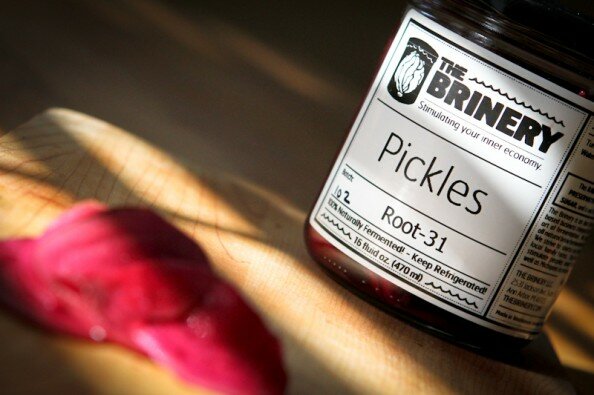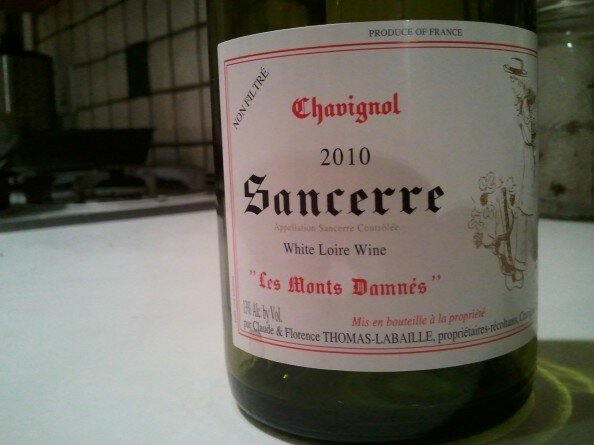
Monthly Archives: January 2012
Gourmet Underground Detroit's content archives are organized by date and catalog the aggregated content of our Features pages as well as our blog.
A Genuine Slice
Master pizzaiolo Dave Mancini’s move from a comfortable career as a physical therapist to serving what is arguably the best pizza in Detroit has been well documented. But it was no easy journey. It took hard work, passion, persistence, and an enduring love for the city to make it happen.
“You can’t hide behind the cheese”
What makes Supino pizza so good? It isn’t some flawless recipe handed down by Mancini’s Italian ancestors or discovered in an ancient Roman text. The secret to his success is nothing more than a focused effort to make the best possible pizza that he could. In fact, it took about seven years from the time he started making pizza to the eventual opening of Supino.
“I researched the shit out of pizza,” he says. To learn the business model, on his Saturdays off, he worked in a Birmingham pizzeria. He bought every recipe book he could find, even purchasing entire books for just one pizza recipe. After struggling with a few variables in the crust that he just couldn’t get a handle on, he did some consultation with a former pizzaiolo at Boston’s renowned pizza joint, Santarpios, until he got the consistency that he was looking for.
“A pizza is never really better than its crust. You can have amazing toppings and amazing sauce but if the crust is mediocre, the pizza is going to be mediocre.”
 Regular patron and pizza aficionado, Phil Spradlin, tends to agree. He only orders his pizza with cheese because, as he tells Mancini, “You can’t hide behind the cheese.”
Regular patron and pizza aficionado, Phil Spradlin, tends to agree. He only orders his pizza with cheese because, as he tells Mancini, “You can’t hide behind the cheese.”
The question of style comes up more often than Mancini would care to address. “It cracks me up when I hear ‘New York-style pizza and New Haven-style pizza’, he says. “There are so many variations within those subgroups. Even between those two there is overlap. If you go to New York and get pizza at six different places, they are going to be pretty damn different. They’re not going to be Detroit-style, like Buddy’s, or Chicago-style. You can probably find those in New York but when people talk about New York-style pizza they aren’t pinning down a specific process. Most of them have a thin crust and are 18-inch pies but other than that, they’re kind of their own thing.”
He gets New Yorkers that come into the shop with a broad range of opinions. Some of them will tell Mancini that the pizza is just like home, some of them will tell him that it’s not really like home but it’s good enough, and some of them will tell him that it’s better than home.
Ask Mancini what style of pizza he makes and the short answer is “Dave’s style”.
Detroit Synergy
Local media make a big deal when celebrity chefs open upscale restaurants in Detroit. These successes certainly foster a positive perception of dining in Detroit, both locally and nationally. But it’s just as crucial – some would say even more so – for the resurgence of the city that small, independent establishments take root in their respective communities and be more than simply a place to eat good food.
For Mancini’s part, he’s doing what he can to help other promising food businesses by using their products and sometimes even opening his kitchen to them. You can order Katie’s Cannoli, hand-filled at the time of order so the shell stays crisp, for dessert. Porktown trades a portion of their sausage for use of his kitchen and Mancini purchases more for his pizza. The Asian inspired pop-up café, Neighborhood Noodle, operated out of Supino for a few of their monthly gigs.
 He seems almost embarrassed talking about the role he plays in this culture of cooperation, and believes he sometimes gets too much credit. Mancini recognizes that he’s certainly not the first one to think of mentoring other food entrepreneurs and is quick to praise those that have come before him and have helped him get his own business off to a strong start.
He seems almost embarrassed talking about the role he plays in this culture of cooperation, and believes he sometimes gets too much credit. Mancini recognizes that he’s certainly not the first one to think of mentoring other food entrepreneurs and is quick to praise those that have come before him and have helped him get his own business off to a strong start.
Like Jerry Belanger, owner of Park Bar, who would come in and order fifteen pies to hand out to his customers and give Supino a boost in its early days after opening. Spirited restaurateur Torya Blanchard helped to get Supino featured in Delta Sky Magazine. When Mancini decided he wanted to serve beer, Dan Scarsella of Motor City Brewing Works consulted with him, knowing the two businesses might be in direct competition.
Even neighboring Russell Street Deli would hand out menus to their customers during the lunch hour, apparently unconcerned about the possibility of losing customers. Mancini maintains that this cooperative culture “especially plays well in Detroit, because we’re underserved”.
He recalls the recent food truck gathering in Shed 2 of Eastern Market and how he was slammed with customers the entire time just because the event drew hordes of hungry people. Though some of his friends in the restaurant industry bristle about the possible competition with food carts, he believes that Detroit is a long way away from worrying about this kind of rivalry for the dining dollar.
Eastern Market on the rise
Eastern Market wasn’t the first location Mancini thought of when looking for a building to house Supino’s kitchen. It was only after an extensive three-year search, underscored by negotiations with indifferent landlords that had no interest in taking any risk by repairing the spaces they owned, that he “fell backasswards” into his current location.
Mancini finds far more advantages than challenges being based out of the Market district. Though all the buildings are old and there is always something that needs repair, that’s more than made up for by the steady foot traffic from the Saturday market, folks from downtown coming in for lunch on the weekdays, and other food workers in the neighborhood. “I think people with a good food idea are crazy not to jump into the Eastern Market area,” he says. He especially thinks that a good bistro and brewpub would do well there.
 Mancini has no plans to open a new location any time soon. He’s not the type to risk the quality of his product to cash in on its popularity. But there will be some changes this year.
Mancini has no plans to open a new location any time soon. He’s not the type to risk the quality of his product to cash in on its popularity. But there will be some changes this year.
He is consulting with local drinks authority, Putnam Weekley, to bring in a beverage program. Soon you’ll be able to order a beer or inexpensive glass of table wine chosen specifically to pair with the pizza. He also envisions a small, European-style bar with plenty of apertivi, digestivi, and a modest liquor selection. He speaks enthusiastically about Amaro CioCiaro, a bittersweet Italian liqueur produced in the same region as the town of Supino, Italy that he noticed one night while drinking at The Sugar House.
But instead of rushing to sell booze and maximize profit, he’s carefully planning how and what to introduce into the menu and ensure the core of his business stays healthy. While unsexy in comparison to a San Gennaro pie straight from the oven, all of this methodical planning and attention to detail is fundamental to Dave Mancini’s success, and makes certain that Supino will remain a fixture in Detroit for a long time to come.
The Brinery’s New Turnip Pickles

Ann Arborites have been able to sink their teeth into the naturally fermented products of The Brinery for some time. David Klingenberger, owner and crazy mad genius of the old school lacto-fermentation process, has been selling at the Ann Arbor farmer’s market and working with Washtenaw County restaurants. Thankfully, he’s now at Eastern Market and those of us a little closer get regular access to his goods.
His most recent offering is made from a turnip of Japanese origin. And it’s amazing.
Hakurei turnips (pronounced, as I understand it, hah-kur-eye) are, in Klingenberger’s words, “the honeycrisp of turnips” — sweet, crisp, tender, and juicy. He’s routinely made turnip pickles in the past, and they’re perfectly delicious with a nice earthy flavor and cut thickly for a nice combination of chewiness and crunch. It is evidently the ideal turnip for consuming raw and doesn’t even require peeling, a notion espoused by plenty of blogging salad lovers.
Given The Brinery’s natural fermentation process whereby the raw veggies are preserved by bacteria (rather than by cooking and vinegar), these would seem to be pretty well suited to pickling.
And indeed, they are: Their new Hakurei-based pickles are shaved exceptionally thin and remain quite crunchy. Klingenberger sources these from Ann Arbor-based Garden Works, a certified organic 4.5-acre truck garden and greenhouse farm, but the turnip is a hybrid developed in Japan in the 1950s.
The pickles are irresistible on their own, or throw them on a little baguette sandwich if you can keep your hand out of the jar. Fans of fermented goods can pick them up on Saturdays at Eastern Market or check out where David will be selling his products next at The Brinery’s website.
Thomas-Labaille Sancerre

Louis-Dressner imports a lot of youthful, sometimes funky wines – wines that I love, but that sometimes lack the austerity and gravitas I occasionally crave. In fact, much of the cult following surrounding Dressner is built around a host of inexpensive wines, funky natural wine, and heirloom grapes grown in uncommon places. And rightfully so. But they also bring in a few more traditional gems that are true values.
Tonight’s absurdly delicious Dressner import? Sancerre from Thomas-Labaille.
I’ve been in love with this wine since the first time I tasted it as part of the 2005 vintage. There’s no point in repeating what’s already easily available and accessible elsewhere, but in brief, the flagship wine from this producer comes from vines 30 years or older and the vineyard, Les Monts Damnés, is generally regarded as the top site in the entire region of Sancerre.
What’s always drawn me to this particular wine is the uncommon combination of a smooth, supple, round texture and an acidity in the finish that goes on for an eternity. Aging on the lees explains some of the weight, but still, this exceedingly pale sauvignon blanc is paradoxical in how it feels almost viscous but is actually light and tastes minerally but also incredibly tart. It just screams with natural, real fruit flavor, delicate early and puckering late.
Try it with goat cheese. I was introduced to the combination with perhaps my second bottle or so, and in reading up on Sancerre, I saw that Labaille is made near the village of Chavignol, a town famous for its crotin that doesn’t have its own sub-appellation of Sancerre but is obviously home to significant food and drink production. Once again, the rule of thumb that food and drink from a long-standing culture and geography probably work together.
The 2010 vintage just showed up here in Detroit back in December. Ask your local retailer for some. It’s not “cheap,” but it’s hardly a pricey bottle especially for the quality you get. The most intense but elegant sauvignon blanc I can think of for the money.